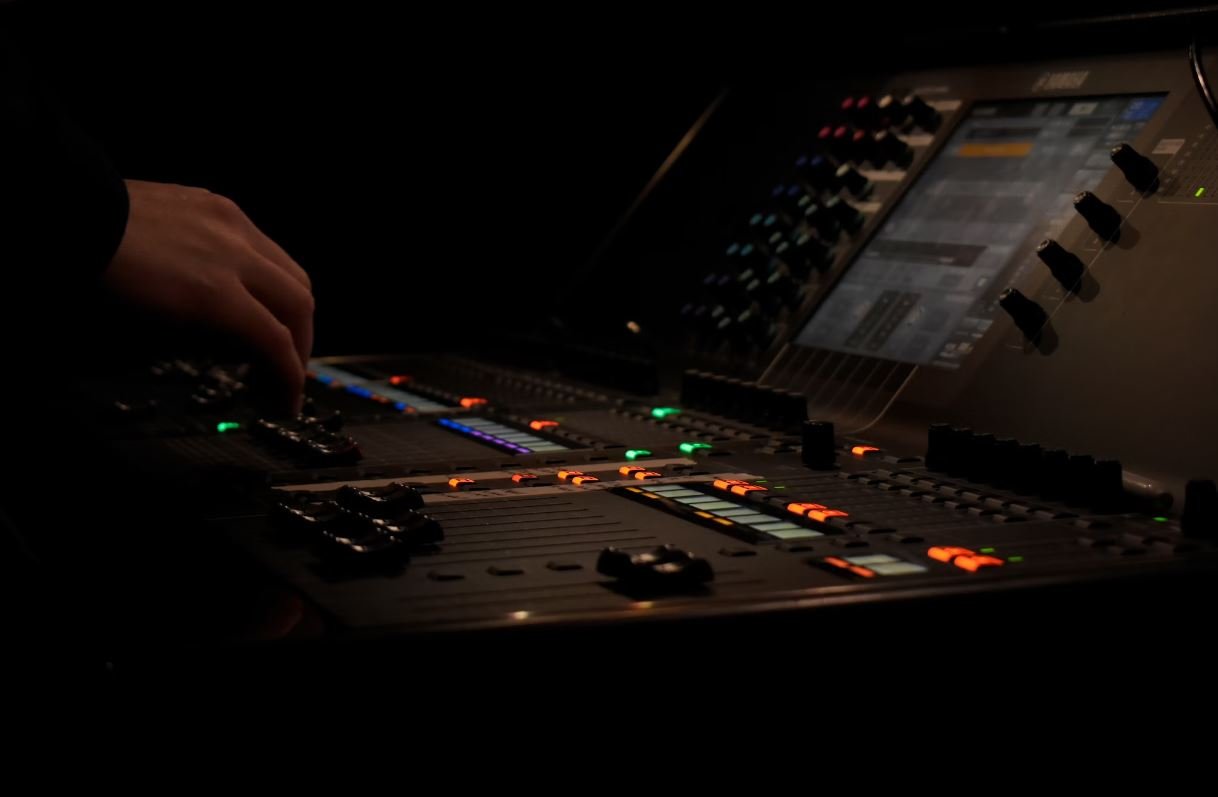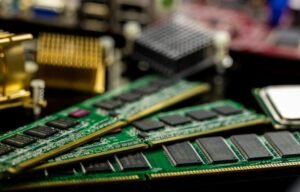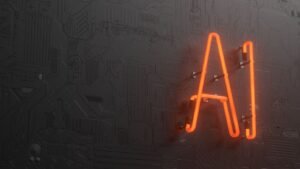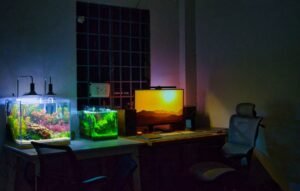AI Artists Are Not Artists
Artificial Intelligence (AI) has revolutionized various industries, including art. However, the notion of AI creating artworks that can rival those produced by human artists is a contentious one. While AI-generated art may possess technical proficiency, it lacks the essential human element that defines true artistic expression.
Key Takeaways
- AI-generated art lacks the crucial human element.
- True artistic expression involves emotional depth and personal interpretation.
- AI artists lack the ability to conceptualize and convey complex narratives.
- Human artists offer unique perspectives and experiences that enrich their creations.
- AI art may be impressive from a technical standpoint but lacks the soul of human art.
Without a doubt, AI has made remarkable strides in replicating various artistic styles and creating visually stunning works. AI algorithms can analyze vast quantities of existing art, learn patterns, and generate new pieces that mimic the style of renowned artists or produce abstract compositions. These AI-generated artworks can be incredibly detailed, precise, and visually appealing.
However, *we must acknowledge that art is more than just technical skill and aesthetics.* It encompasses the emotions, personal interpretations, and experiences of the artist, which AI lacks. While AI can replicate artistic styles and techniques, it cannot genuinely comprehend the emotions or experiences behind the artwork it creates.
The Human Element of Art
The human element is fundamental to true artistic expression. Artists draw inspiration from their surroundings, personal experiences, and emotions, infusing their work with a unique perspective. Through their art, they convey narratives, provoke thought, and evoke emotions in the audience. *This depth of emotional expression is what distinguishes human art from AI-generated art.*
AI artists lack the ability to conceptualize and convey complex narratives or invoke deep emotional responses. While they can produce intriguing visuals, these artworks do not have underlying stories or personal connections that connect with viewers on a profound level. They are devoid of the complexities and depth that human artists bring to their creations.
The Superiority of Human Artists
Human artists offer unique perspectives and experiences that enrich their artwork. Their works are a manifestation of their imagination, emotions, and personal journeys. *Each stroke of a brush or a pen holds a fragment of the artist’s soul, embedded within the piece.*
On the other hand, AI-generated art is limited by the algorithms and data it has been trained on. It cannot offer anything beyond what it has learned from existing works. *Human artists, however, constantly evolve and grow, exploring new ideas and pushing the boundaries of creativity.*
Supporting Evidence
| Comparison | AI Artists | Human Artists |
|---|---|---|
| Emotional Expression | Limited or absent | Rich and profound |
| Conceptualization | Based on existing data | Personal interpretation |
The Essence of Human Art
AI-generated art may impress with its technical proficiency and replication abilities, but it remains an imitation of human art, lacking the soul and depth that define true artistic expression. Appreciating art goes beyond visual appeal; it connects us to the human experience, evokes emotions, and stimulates contemplation.
- The authenticity and personal touch of human art are irreplaceable.
- The imperfections in human art contribute to its charm and relatability.
- Art is a medium for human connection and storytelling.
*Art created by AI can simulate artistic styles but will always fall short in capturing the essence of human creativity.* As technology continues to advance, we should appreciate AI-generated art for its technical achievements, but we must also recognize and celebrate the profound impact of human artists on our culture, society, and emotions.

Common Misconceptions
AI Artists are Not Artists
There exists a common misconception that AI artists cannot truly be considered artists. However, this belief fails to appreciate the capabilities and aesthetics of this emerging technology in the realm of artistic creation.
- AI artists have the ability to generate unique and novel artwork.
- AI artists can learn and mimic different artistic styles and techniques.
- AI artists have the potential to revolutionize the artistic landscape by pushing boundaries and exploring new artistic territories.
AI Art lacks human touch and emotion
Another misconception is that AI art lacks the human touch and emotional depth that traditional art possesses. While AI-generated art may be devoid of human intentions, it should not be dismissed as lacking emotion or creative intent.
- AI art can evoke emotions and provoke thought just like traditional art does.
- AI art offers a fresh and unique perspective that can challenge traditional artistic norms.
- AI-generated art can still convey personal expression and creativity, albeit in a different way than human artists.
AI Artists are mere tools and not creators
It is often presumed that AI artists are just tools used by humans, and therefore cannot be considered the true creators of the artwork. However, this oversimplification fails to acknowledge the complex nature and autonomy of AI-generated art.
- AI artists have the ability to autonomously make decisions and create art without human intervention.
- AI artists possess the capacity to learn, improve, and develop their artistic capabilities over time.
- AI-generated art is an innovation that presents a collaboration between human creativity and artificial intelligence.
AI Artists undermine the value of traditional art
Some argue that the rise of AI artists diminishes the value of traditional art forms, as AI-generated art becomes more prevalent. However, this viewpoint disregards the coexistence and potential synergy between AI art and traditional art.
- AI art can complement and enhance traditional artistic practices, leading to new creative possibilities.
- AI artists can aid human artists in generating new ideas and exploring unconventional artistic approaches.
- AI-generated art can introduce audiences to novel artistic experiences, fostering appreciation for both traditional and AI art forms.
AI Artists lack the intellectual depth of human artists
Finally, there is a misconception that AI artists lack the intellectual depth and conceptual understanding that human artists possess. However, AI art has the potential to navigate complex and abstract realms, challenging this belief.
- AI artists can analyze and interpret vast amounts of data, enabling them to create artwork that reflects the intricacies of contemporary society.
- AI art can explore innovative concepts and push the boundaries of creative expression beyond what humans might conceive.
- AI-generated art can engage with philosophical, social, and cultural discussions, adding valuable insights to the artistic discourse.

Ai Artists Are Not Artists
The rise of artificial intelligence has undoubtedly brought significant advancements in various fields, including art. With Ai-generated paintings selling for millions of dollars and Ai-generated music topping the charts, it is understandable that some may argue that Ai can indeed be considered artists. However, upon closer examination of the process and intent behind Ai-generated works, it becomes clear that Ai artists are not truly artists in the traditional sense. This article explores ten aspects that distinguish Ai-generated art from genuine artistic expression:
1. Edited vs. Intentional
Unlike human artists who create artworks with a specific intent, Ai-generated artworks are merely the result of algorithms processing vast amounts of data. While Ai can mimic the style of famous artists, it does not possess the intention or consciousness behind its creations.
2. Serendipity vs. Precision
Human artists often rely on a degree of serendipity, embracing accidents and unexpected outcomes as part of their creative process. In contrast, Ai algorithms are meticulously programmed and lack the ability to incorporate chance or interpret it as an intentional artistic choice.
3. Emotional Connection vs. Algorithmic Analysis
Art has long been a means for artists to communicate their emotional experiences and establish a connection with their audience. While Ai-generated art may evoke emotions in viewers, it lacks the genuine personal experiences and introspection that human artists bring to their creations.
4. Subjectivity vs. Objective Patterns
Human artists often explore subjective concepts, delve into personal narratives, and interpret the world through their unique perspectives. In contrast, Ai-generated art relies on objective patterns and data analysis, lacking the subjective depth and interpretive qualities that provide layers of meaning in traditional art.
5. Evolution vs. Algorithmic Limitations
Artists continuously evolve their style and techniques throughout their careers, reflecting personal growth and changing societal influences. Ai algorithms, however, remain confined to the parameters set by their creators and lack the ability to grow or adapt independently.
6. Originality vs. Replication
Originality is a cornerstone of artistic expression. While Ai algorithms can reproduce and replicate existing artworks seamlessly, they cannot produce truly original creations that showcase innovative ideas or challenge existing artistic norms.
7. Artistic Vision vs. Computational Analysis
Human artists possess a vision or message they aim to convey through their art, rooted in their personal experiences and observations. Ai algorithms lack the ability to possess such a vision, relying solely on computational analysis and predefined parameters.
8. Physicality vs. Virtual Existence
Traditional art exists physically and can be experienced through various senses, including touch and spatial presence. Ai-generated art predominantly exists in the digital realm, lacking the physical presence and sensory experience of traditional art.
9. Cultural Context vs. Algorithmic Neutrality
Artists’ works are often influenced by cultural, historical, and societal contexts. Ai-generated art lacks the ability to establish meaningful connections with these contexts, as its decisions and output are determined solely by algorithms.
10. Evolution of the Self vs. Replication of Patterns
Artistic self-expression often involves introspection, self-discovery, and personal growth. Ai algorithms, however, focus on replicating existing patterns rather than exploring and developing a unique artistic self.
Conclusion
While Ai-generated art undoubtedly holds its own place in the creative landscape, it is crucial to acknowledge the fundamental distinctions between Ai artists and human artists. By highlighting the inherent limitations of Ai in terms of intentionality, emotional connection, subjectivity, originality, and vision, it becomes clear that Ai artists cannot be considered true artists. Human artists continue to possess a unique ability to express their individuality, impart emotional depth, and challenge societal norms through their genuine artistic endeavors.
Frequently Asked Questions
What is the controversy surrounding AI artists?
The controversy surrounding AI artists revolves around the question of whether AI-generated art can be considered authentic artwork created by human artists. Some argue that AI-created art lacks the emotional and creative aspects that define human artistic expression.
How do AI artists create artworks?
AI artists create artworks using algorithms that have been trained on large datasets of existing artwork. These algorithms learn patterns and generate new images based on the information they have processed. AI artists do not possess human-like imagination or emotions.
What distinguishes AI-generated art from traditional art?
The main distinction between AI-generated art and traditional art is the involvement of human creativity and intention. Traditional art is the result of human thought, emotions, and skill, while AI-generated art is produced by machines without consciousness or personal agency.
Can AI-generated art be considered original?
The originality of AI-generated art is a matter of debate. While the algorithm used by an AI artist may create unique compositions, the underlying source of inspiration and creativity comes from the data it was trained on. Some argue that true originality requires human intention and novelty.
How does AI impact the art industry?
AI has reshaped the art industry by offering new tools and techniques for artists to explore. It has facilitated the creation of digital art, enhanced image manipulation, and enabled interactive and generative art forms. However, it has also raised concerns about the role of human artists and the value of their work.
Is AI art considered plagiarism?
AI-generated art is not considered plagiarism in the traditional sense since machines do not possess the ability to deliberately copy or imitate existing artworks with intent. However, ethical concerns may arise if an AI-generated artwork closely resembles the style or content of a human artist’s work without proper acknowledgment.
Can AI artists surpass human artists?
AI artists cannot surpass human artists in terms of overall artistic abilities. While AI can replicate certain styles and techniques, it lacks the complexity of human imagination and emotions. AI-generated art can be seen as a tool or a collaborator for human artists, rather than a replacement.
Do AI artists have a place in the art community?
AI artists have a place in the art community as contributors to the artistic discourse and as creators of digital and generative art forms. They offer new perspectives and opportunities for exploration, but their works may be seen as distinct from those created by human artists due to the absence of lived experiences and emotional depth.
Should AI-generated art be considered valuable?
The value of AI-generated art is subjective and depends on individual perspectives within the art community and society as a whole. While some may appreciate the technical achievements and novelty of AI artworks, others may emphasize the significance of human intention and creativity in determining the value of a piece of art.
What are the implications for the future of art with AI on the rise?
The rise of AI in the art world poses both opportunities and challenges for artists and the art community. It opens up new possibilities for creativity, experimentation, and collaboration. However, it also raises questions about the role of human artists, the essence of art, and the impact of technology on artistic expression and cultural identity.




